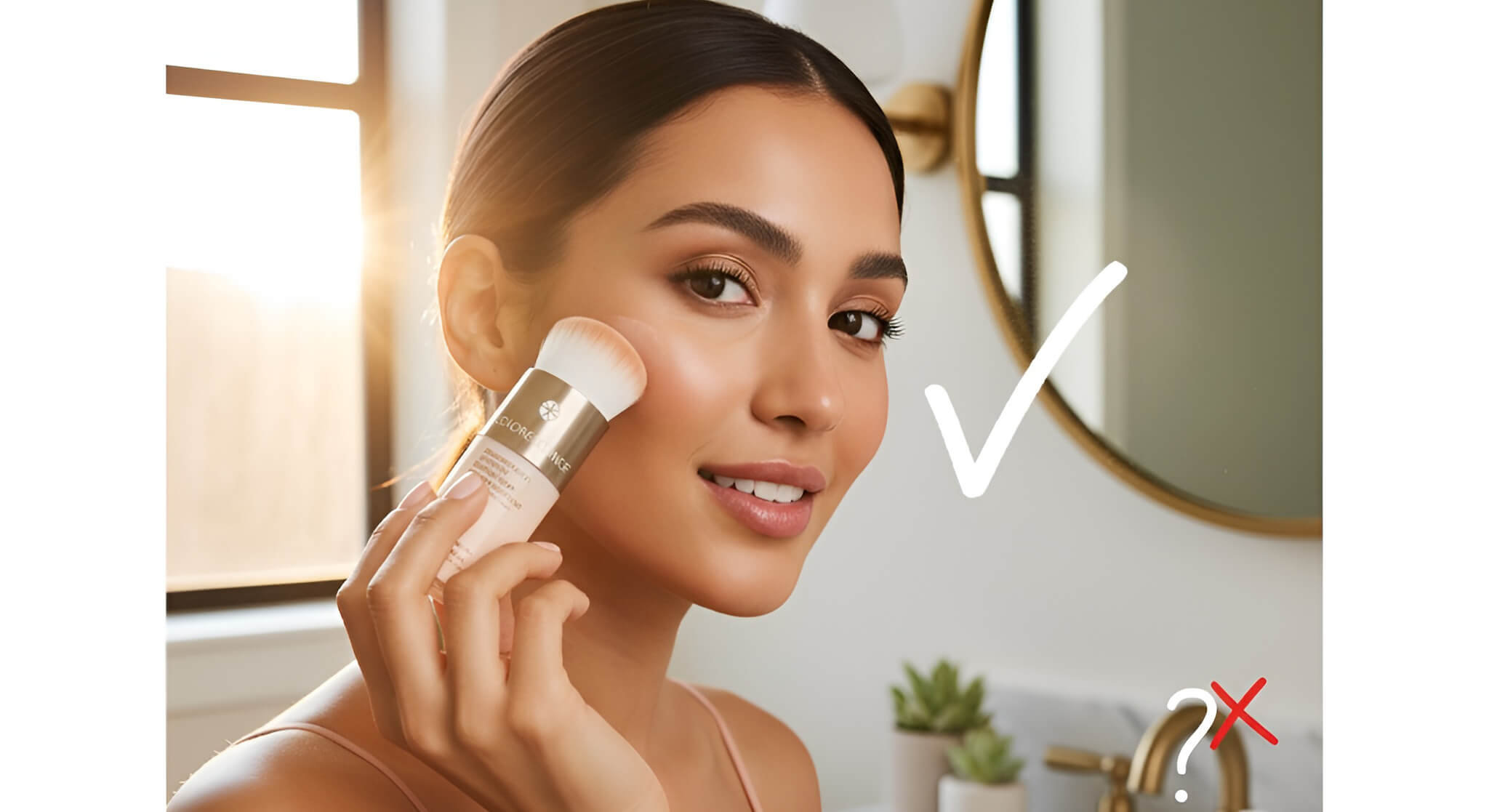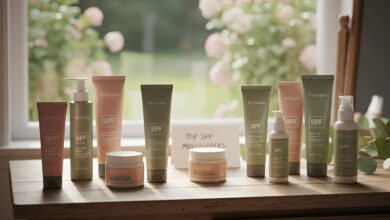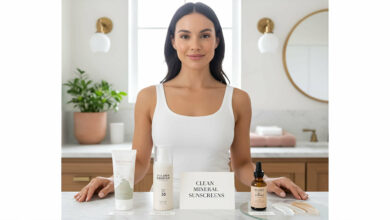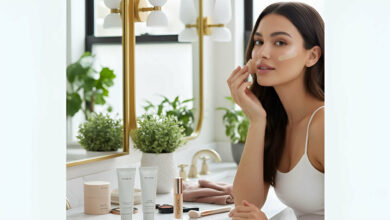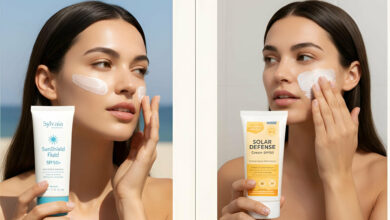Do Powder SPFs (Like Colorescience’s) Actually Provide Real Protection?
Table of contents
- The 2 P.M. Dilemma: The Quest for Mess-Free Reapplication
- The Science: How Mineral Powders Protect Your Skin
- The Verdict: A “Touch-Up Tool,” Not a “Primary Shield”
- The At-a-Glance Comparison Table
- The Dermatologist-Recommended Method for Using Powder SPF
- The Final Word: The Perfect Partner, Not a Replacement
The 2 P.M. Dilemma: The Quest for Mess-Free Reapplication
It’s 2 PM. You know it’s time to reapply your sunscreen, but you have a full face of makeup on. The thought of slathering a creamy or liquid lotion over your perfectly set flawless base is a nightmare. This is where the powder SPF, like the popular brush-on applicators from brands like Colorescience, enters as the perfect, elegant solution.
These convenient, portable brushes promise broad-spectrum sun protection without ruining your makeup. But can a light dusting of powder really provide reliable protection against the sun, or is it just a glorified finishing powder with a big promise?
The answer is a resounding yes, but with a few very important, non-negotiable rules. We’re diving into the science behind powder sunscreens to explain when they are effective, and when they are dangerously insufficient.
The Science: How Mineral Powders Protect Your Skin
Powder SPFs are a form of mineral (or physical) sunscreen. Their active ingredients are typically titanium dioxide and zinc oxide. These mineral particles sit on the surface of your skin and act like millions of tiny mirrors, physically reflecting and scattering harmful UV rays away from your skin. Both titanium dioxide and zinc oxide are prized for providing broad-spectrum protection, covering both UVA and UVB rays.
The Application Problem: The ingredients themselves are highly effective. The challenge lies in the application. To achieve the SPF number stated on the packaging (e.g., SPF 50), you must apply a thick, dense, and even layer of the product. With a brush, it is nearly impossible to know if you’ve applied enough powder to create that protective shield, especially for your initial application of the day.
The Verdict: A “Touch-Up Tool,” Not a “Primary Shield”
The effectiveness of a powder SPF depends entirely on how and when you use it.
YES, they are effective as a reapplication and touch-up tool.
This is where powder SPFs truly shine and what they are best designed for.
- Excellent for Reapplication Over Makeup: This is their primary, game-changing benefit. They can be swept over makeup without causing smearing or pilling.
- Great for Oily Skin: They have a mattifying effect, instantly absorbing excess oil and reducing shine while adding a fresh layer of protection.
- Good for Sensitive Skin: As mineral-based sunscreens, they are often gentler and less irritating for sensitive and acne-prone skin types than some chemical sunscreens.
NO, they are not effective as your only sunscreen for the day.
This is the most critical point to understand for your skin’s health.
- Nearly Impossible to Apply Enough: For your first application of the day, you need guaranteed, uniform coverage. It is almost impossible to apply a sufficient amount of powder with a brush to achieve the stated SPF protection.
- Can Look Cakey if Over-Applied: In the attempt to apply enough powder for primary protection, it’s very easy to end up with a heavy, cakey makeup look.
- Not Water-Resistant: They are not designed for the beach or a workout, as they will come off easily with sweat or swimming.
The At-a-Glance Comparison Table
| Feature | Powder SPF (for Touch-Ups) | Cream/Lotion SPF (for Base) |
| Primary Use | Reapplication Over Makeup | Initial Daily Protection |
| Application Challenge | Hard to apply enough | Easy to measure & apply evenly |
| Finish | Matte | Varies (Dewy to Matte) |
| Best For | On-the-go, Oily Skin | All-day foundational protection |
| Water Resistance | Low | High (if specified) |
The Dermatologist-Recommended Method for Using Powder SPF
To use a powder SPF safely and effectively, follow this simple, two-step process.
Step 1: Start with a Solid Foundation
In the morning, always begin by applying a generous, even layer of your favorite traditional cream, lotion, or gel sunscreen. This is your non-negotiable primary shield of protection for the day.
Step 2: Use the Powder for Touch-Ups Only
Keep your powder SPF brush in your purse for reapplication. Every two hours, or before you head out for lunch or your commute home, use the brush to touch up your protection.
The Pro-Application Tip: For the best coverage during reapplication, don’t just do a light dusting. Apply the powder in several thin layers. Use the brush in gentle, circular motions all over the face for at least 60 seconds to ensure you are depositing a uniform and protective layer.
The Final Word: The Perfect Partner, Not a Replacement
So, do powder SPFs actually provide real protection? Yes, they are an excellent and effective tool for their intended purpose: reapplication. But they are absolutely not a replacement for your primary morning sunscreen.
Think of a powder SPF as the perfect ‘partner’ for your cream sunscreen, not its substitute. It brilliantly solves the problem of how to reapply SPF over makeup, allowing you to stay protected, shine-free, and flawless all day long. It’s a smart and essential addition to any modern skincare routine.
